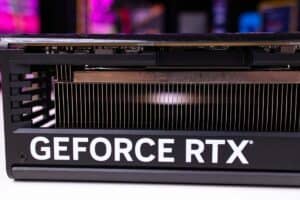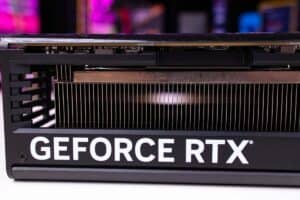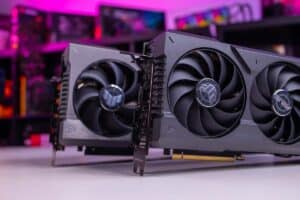RTX 4070 vs RTX 4070 Ti
Which of the two GPUs is best for you?
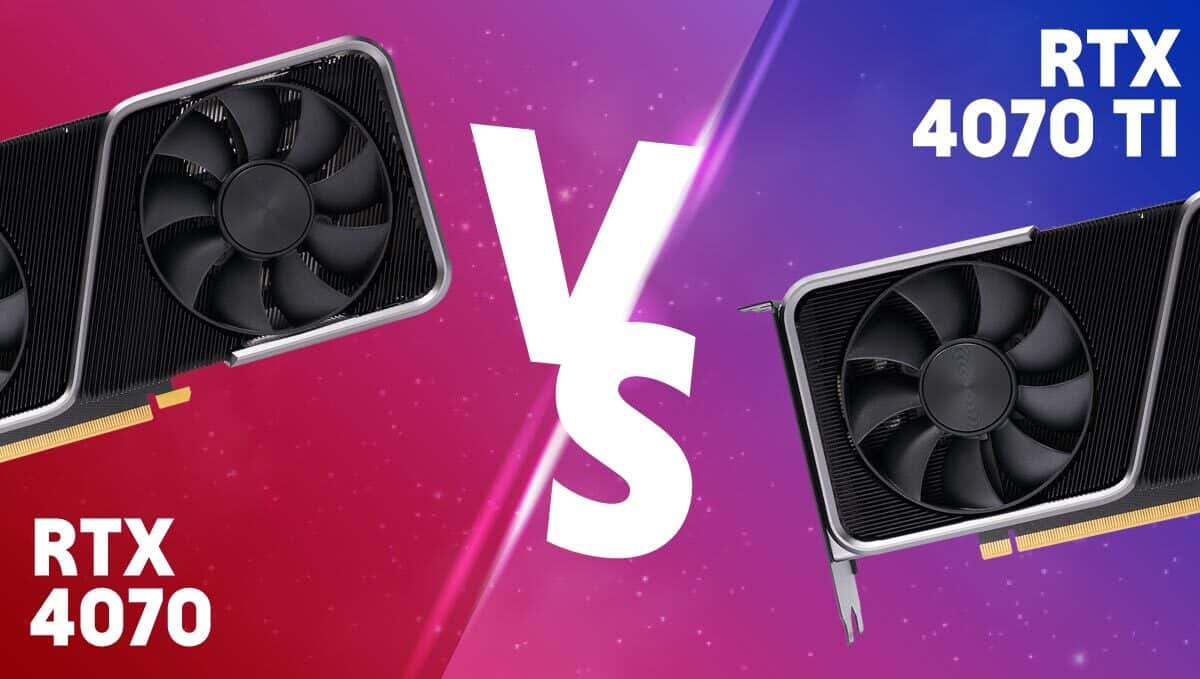
WePC is reader-supported. When you buy through links on our site, we may earn an affiliate commission. Prices subject to change. Learn more
RTX 4070 vs RTX 4070 Ti: Today, we’re here to find out what GPU is better, the RTX 4070, which is about to release, or the RTX 4070 Ti, a staple in the powerful, more budget-orientated space. But which is best for you? Here we will compare the RTX 4070 with the RTX 4070 Ti.
Choosing a GPU depends on the uses you have for it, primarily, the 4070 and 4070 Ti are for gaming workloads, but they can be used for streaming and some workstation applications. Read on to find out which is better, the 4070, or the 4070 Ti.
RTX 4070 vs 4070 Ti
Here we will compare the RTX 4070 and the RTX 4070 Ti. We will compare the specs, and run through what makes GPU great, this will allow you to make a decision on what’s right for you. Ultimately it’s your use case that determines the best GPU.
RTX 4070 specifications
Here are the RTX 4070 specifications as we know them so far.
- Process: 4nm TSMC
- CUDA cores: 5,888
- Base clock: 1,920 MHz
- Memory Size: 12 GB
- Boost clock: 2,475 MHz
- Memory clock: 21 Gbps
- Memory bandwidth: 504 GB/s
- TBP: 200W
- PCIe interface: Gen4 x 16
- MSRP $599
RTX 4070 Ti specifications
Here we will outline the RTX 4070 Ti specifications.
- Process: TSMC 4N
- CUDA cores: 7,680
- Base clock: 2,310 MHz
- Boost clock: 2,610 GHz
- Memory size: 12 GB
- Memory clock: 21 Gbps
- Memory bandwidth: 504 GB/s
- TBP: 285W
- PCIe interface: Gen4 x 16
- MSRP $799
As you can see, the 4070 Ti is a formidable GPU, and where it doesn’t demolish the RTX 4070, it matches it completely. The 4070 TI does come at a bit of a price hike though, as you’re paying $200 more for the privilege.
RTX 4070 Vs 4070 Ti: things to consider
As with choosing anything, the deciding factor is mainly you, and your use case. It doesn’t matter how many bells and whistles a GPU has if it won’t work for your use case.
Here’s everything you need to consider about whether or, not the 4070 is right for you vs the 4070 Ti.
GPU CUDA core count
The CUDA core count is a key factor that can affect the performance of a GPU in certain types of workloads, particularly those that can be parallelized using CUDA, such as scientific simulations, machine learning, and video processing.
CUDA cores are small processing units within a GPU that can execute instructions in parallel, allowing for faster computation of data-intensive tasks. The more CUDA cores a GPU has, the more parallel computations it can perform simultaneously, which can result in faster processing times and improved performance.
It’s important to note that the actual performance gain achieved by increasing the CUDA core count will depend on a variety of factors, including the specific workload being performed, the quality of the software implementation, the amount and speed of the GPU’s memory, and the efficiency of the cooling system.
Increasing the CUDA core count typically comes with a trade-off in terms of power consumption and heat generation, which can limit the ability to increase the core count beyond a certain point without sacrificing stability or reliability.
GPU clock speed
The maximum rated boost GPU clock speed is an important specification that can have a significant impact on the performance of a GPU. This clock speed represents the highest frequency that the GPU can operate at under ideal conditions, and is typically achieved when the workload is utilizing all of the available processing resources and the GPU is operating within its power and temperature limits.
A higher maximum rated boost GPU clock speed generally means that the GPU can process more data and perform calculations faster, resulting in improved performance and higher frame rates in games or faster processing times in other applications. However, the actual performance gain achieved by increasing the maximum rated boost GPU clock speed will depend on a variety of factors, including the specific workload being performed, the quality of the software implementation, and the efficiency of the cooling system.
It’s also important to note that increasing the maximum rated boost GPU clock speed typically comes with a trade-off in terms of power consumption and heat generation, just like CUDA core count. This means that the GPU may require a more powerful and efficient cooling system to prevent thermal throttling and ensure stable operation at higher clock speeds. Additionally, increasing the clock speed can also increase the risk of hardware failure, particularly if the GPU is overclocked beyond the manufacturer’s specifications.
GPU memory size
The size of a GPU’s memory can have a significant impact on its performance, particularly when it comes to tasks that require large amounts of data to be processed, such as high-resolution graphics rendering, video processing, and deep learning.
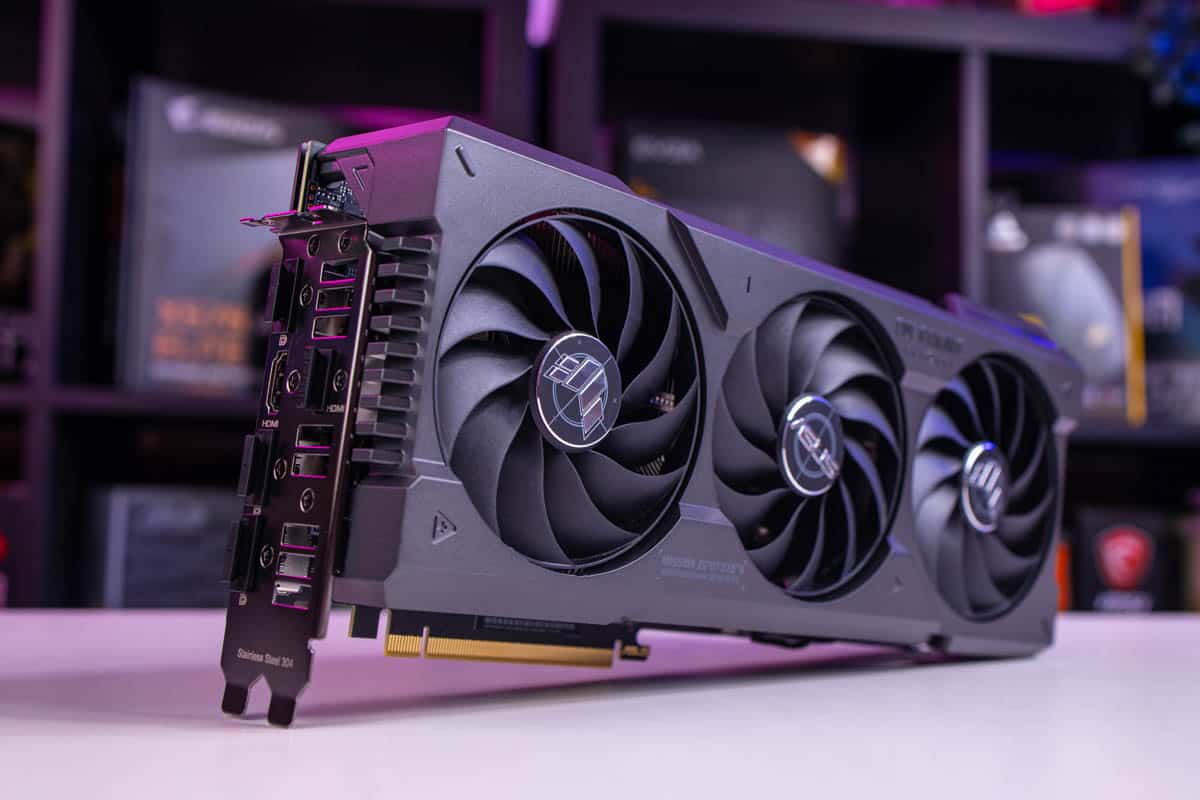
A GPU’s memory, also known as VRAM (Video Random Access Memory), is used to store data and instructions that the GPU needs to perform its calculations. The more memory a GPU has, the more data it can store and process at any given time. This means that a larger memory size can lead to improved performance and faster processing times, particularly when working with large datasets.
It’s important to note that the impact of memory size on performance can vary depending on the specific workload and the efficiency of the software used to leverage the GPU’s processing power. In some cases, increasing the memory size beyond a certain point may not result in any significant performance gains, as the GPU may not be able to fully utilize the additional memory due to limitations in other areas, such as processing power or memory bandwidth.
larger memory sizes typically come at a higher cost, both in terms of the cost of the GPU itself and the power consumption required to operate it. This means that choosing a GPU with a larger memory size should be a carefully considered decision based on the specific needs of the intended workload.
GPU TBP (total board power)
The TBP (Total Board Power) of a GPU is the maximum amount of power that the GPU can draw from the PSU and the amount of power that the cooling system is capable of dissipating. The TBP of a GPU can affect its performance in a few ways.
Firstly, if the TBP of a GPU is too low for the specific workload, it may not be able to maintain the required clock speeds for optimal performance, which can result in lower frame rates or slower processing times. This can be particularly problematic in workloads that require sustained high levels of GPU utilization, such as gaming or machine learning.
A high TBP can lead to increased power consumption and heat generation, which can impact system stability and increase the risk of thermal throttling or hardware failure. This can be mitigated by using an efficient cooling system and ensuring that the PSU is capable of delivering the required power without overheating or causing voltage drops.
The TBP of a GPU can impact its overall efficiency, as a higher TBP generally means a lower power efficiency. This means that a GPU with a higher TBP may require more power to achieve the same level of performance as a GPU with a lower TBP.
Final Word
In conclusion, the RTX 4070 and RTX 4070 Ti are both highly advanced graphics cards that offer impressive performance and cutting-edge features. While both cards share many similarities in terms of architecture and core counts, the RTX 4070 Ti comes with higher clock speeds and more CUDA cores, which can result in improved performance in certain workloads.
However, the higher price point of the RTX 4070 Ti may make it a less attractive option for some users, particularly those who don’t require the additional performance boost. Ultimately, the choice between the RTX 4070 and RTX 4070 Ti will depend on the specific needs and budget of each user, and both cards are sure to offer an exceptional gaming and computing experience.


